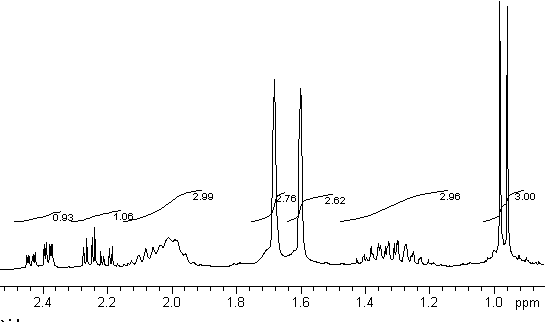Here is the code for an example.
<UL> The beginning of the unordered list.
<LI> The first item for the list.
<LI> The second item for the list.
</UL> The end of the unordered list.
That will display as:
- The beginning of the unordered list.
- The first item for the list.
- The second item for the list.
You can nest subpoints and specify the symbol used for each sublevel by adding the "TYPE" specification. For example.
<ul>
<LI> This is a main point
<ul TYPE=disc>
<LI>This is a subpoint with a disc
<ul TYPE=circle>
<LI>This is a sub subpoint with a circle
<ul TYPE=square>
<LI>This is a sub subpoint with a square
</UL>
</UL>
</UL>
</UL>
- This is a main point
- This is a subpoint with a disc
- This is a sub subpoint with a circle
- This is a sub subpoint with a square
- This is a sub subpoint with a circle
- This is a subpoint with a disc
Definition List
A definition list creates a list with hanging indents. This can be very useful for formatting and layout, but they are a bit confusing. The basic tags for a definition list include:
- <dl> Beginning of a definition list
- <dt> Definition Titles (Major Points)
- <dd> Definition Items (Indented from definition titles)
- </dl> End of a definition list
Here is an example of the code for a definition list.
<DL>
<DT> This is the first point (definition title)
<DD> with one subpoint (called a definition, definition)(<br>)
<br> the second subpoint should be separated by a line break .
<DT> This is the second point
<DD> with a subpoint
</dl>
And the end of the list
This code will display as:
- This is the first point (definition title)
- with one subpoint (called a definition, definition)
the second subpoint should be separated by a line break. - This is the second point
- with a subpoint
Link and Anchor Tags
Links direct a browser to another location. These links can be to anything anywhere on the Web. This makes the web such a useful tool since because documents can point to additional information. A basic link looks like:<A HREF="http://science.widener.edu/~svanbram/">Scott Van Bramer's Web Page</A>
And appear in a browser as:
The elements here include:
- Action - (HREF in example)
- HREF - Hypertext REFerence. Tells the browser that this is a link
- NAME - Tells the browser to mark a location in a document with a name. This allows the HREF action to link to a specific location within a document. Place this tag at the location you want to jump to. The syntax for this tag is:
<A NAME="end">
<A NAME="return to here">The text within quotes is the name of the location. The name is not displayed by the browser, but links can point to it. There is a Name tag here with the name "return to here": and another tag with the name "end" at the end of this document.
The HTML below will jump to the end of the document. There is a link at the very end that will return to this point.
<A HREF="#end">Goto the end</A>
and displays as:
- Protocol. (http:// in the above example) This tells the browser what type of server the link points to. This lets the browser know how to talk to the server. Options include:
- http:// This is a link to a document on a web server.
- ftp:// This is a link to a file on an FTP server.
- file:// This is a link to a file on the browser's computer (The computer the student is sitting at).
- mailto:// This informs the browser that the link is an e-mail address. If your browser is configured correctly, clicking on this link will open up an e-mail message to the address. For example the link svanbram@science.widener.edu ends an e-mail message to me. If students are using a computer in a campus laboratory, this feature may not work as you intended.
- http:// This is a link to a document on a web server.
- The address. This tells the browser where to go. For example the address for this page is
science.widener.edu/svb/htmltalk/ccce/introbasic.html
Addresses may be copied and pasted from the location bar in the browser. Typically the begin with the name of the server (science.widener.edu) and are followed by the file path ( /svb/htmltalk/ccce/) and a file name (introbasic.html ). If a file name is not specified (introbasic.html) the server will return a directory listing. If there is a file named index.html in the directory the server will return that file. The main document in a directory usually has the name index.html.
The address can also specify a location in the document defined with a NAME tag (detailed above). This example shows an address that will jump to a location named "link tags" in the document "basic.html" on the server "science.widener.edu" in the file directory "svb/htmltalk/ccce".
<A HREF="http://science.widener.edu/svb/htmltalk/basic.html#link tags">Examples of links</A>
The link will appear in the browser as a link to the beginning of this section
- Description. For standard usage the link should be descriptive. Avoid saying "click here", the link is highlighted by the browser and it is obvious where to click.
- Absolute vs Relative Addresses. A common source of confusion when writing HTML is the distinction between absolute addresses and relative addresses. It is possible to list addresses two different ways in a link. The difference can be very useful, but also confusing. The first is to use the absolute address. In an absolute address the entire URL is specified. This is analogous to mailing something and giving the complete postal address. The second is to use a relative address. A relative address is analogus to saying deliver the mail two houses down the street. For beginners, I suggest using absolute addresses. Relative addresses can, however, be very useful because they allow you to make references that are relative to a given directory structure. This allows you to have a seperate copy of a web site on your own computer.
Figure Tags
In addition to text, web pages can include figures. These figures may be at any location on the web, you just create a link to the figure and specify where to place it in the web page. If you use a figure from someone else, always as for permission. If you create your own graphics, keep the file size as small as possible. Large graphics files will cause slow downloads that try a reader's patience.Most browsers can view two different types of graphics files. The GIF (Graphical Image Format) file format works best for line art and small images. This file type preserves sharp lines and gets excellent compression when there are large spaces with the same color. The gif image below is inserted with the following HTML code:
<IMG SRC="h_int_d.gif" ALT="Proton NMR Spectrum of citronellal" WIDTH=545 HEIGHT=322>

Notice that the HTML code specifies the width and height of the image. This allows the browser to format the rest of the web page while the image downloads. If the image size is not specified the browser must wait to render the rest of the document. The ALT command in the tag specifies text to displayed until the graphic downloads. It is also important for readers with limited vision who rely upon a text to voice program to hear a web page.
The JPEG (Joint Photographic Experts Group) file format works best for photographs and color images. Some resolution is lost for line art (lines are not a crisp) but file size for photographs is dramatically reduced. This compression works by using shades of color to reduce the file size.
<IMG SRC="sey98h.jpg" ALT="Taking a sextant reading " WIDTH=301 HEIGHT=198>

Because images files can be large, spend some time editing the graphic so that it is as small as practical and use as much compression as you can. If you really need to use a high resolution image it is good form to include a thumbnail in the web page. This small image is a link to the full size image. Interested readers can then download the high resolution figure.
In addition to figures, many other multimedia files may be inserted into a web page. This includes three dimensional renderings of molecules, spectra, video clips, and more.
Table Tags
Tables are a useful feature for formatting information. These are a bit tricky to set up but with most software it is easy to get started. Be careful exporting directly to HTML from spreadsheets and wordprocessors. Many of these programs produce HTML tables that do not work well on many browsers. Adding specifications to the table so that it is perfect on your computer will cause problems with other display sizes. Simple table layouts are much more robust. The major table tags include:
- <TABLE WIDTH=60% ALIGN=center BORDER></TABLE> The tags to define the beginning table, the width, the alignment, the border, and the end of the table.
- <CAPTION ALIGN=top></CAPTION> The table caption
- <TR></TR> A single row of the table.
- <TH></TH> A single element (cell) of the table that is a header for a column or row. This element is usually displayed with a bold font and centered in the cell.
- <TD></TD> A single data element (cell) of the table.
<TABLE WIDTH=60% ALIGN=center BORDER>
<CAPTION ALIGN=top>
Table Caption</CAPTION>
<TR>
<TH>Col 1 header</TD>
<TH>Col 2 header</TD>
<TH>Col 3 header</TD>
</TR>
<TR>
<TD>data 1a</TD>
<TD>data 2a</TD>
<TD>data 3a</TD>
</TR>
<TR>
<TD>data 1b</TD>
<TD>data 2b</TD>
<TD>data 3b</TD>
</TR>
<TR>
<TD>data 1c</TD>
<TD>data 2c</TD>
<TD>data 3c</TD>
</TR>
</TABLE>
And the table itself displays in a browser as:
| Col 1 header | Col 2 header | Col 3 header |
|---|---|---|
| data 1a | data 2a | data 3a |
| data 1b | data 2b | data 3b |
| data 1c | data 2c | data 3c |
Counter Scripts
Most web servers allow counters to be inserted into web pages. This is a handy way to track usage of a web page. The exact details are a function of the software on your web server. It usually involves CGI scripts accessed using special links. See your system administrator for details. The counter on this page uses the following script.
Controlling Access to Web Pages
It is also possible to control access to web pages. There are several different ways to do this. Consult your system administrator for exact details. Most web server software allows access to be restricted by password or by domain. If a web page is restricted by password the user will be prompted for a userid and password. The userid and password must match a list of approved users and passwords. This works well but is somewhat tedious to setup and maintain. Restricting access by domain limits access to a range of IP addresses. For example restricting by domain to 147.31 limits access to computers connected to the Widener University network. No password is required for domain access, so it is easier for students who are on campus. However, if students are off campus they will not be able to view the web page. I use domain restriction for multimedia files to satisfy the copyright concerns of the publisher.
Web Page Maintenance
I highly recommend that you periodically browse through your web pages to find any old links that are no longer valid. There are software programs that automate this process. I use a program called LinkBot.This document was prepared by
Scott Van Bramer
Widener University
Department of Chemistry
svanbram@science.widener.edu
Last Updated Tuesday, January 15, 2002 4:37:01 PM This page has been accessed times since 5/29/96 .